
More than 2,000 years ago, near the Aegean coast of modern-day Turkey, the Greek city of Pergamon was an important center of learning and healing. Today, it is one of the 26 newest UNESCO World Heritage sites, joining such significant natural and cultural sites as France’s prehistoric cave paintings of Pont d’Arc, China’s extensive Grand Canal, and Denmark’s remarkably preserved fossil record at Stevns Klint.
Each summer, the Paris-based United Nations agency meets—as it did recently in Doha, Qatar—to grant this coveted status to natural and man-made sites around the globe, almost always ensuring boosts in tourism and preservation assistance. The latest inscriptions bring the number of sites deemed most noteworthy—and fascinating—on the planet to 1,007. Here are 15 of the newest additions.
Image Gallery
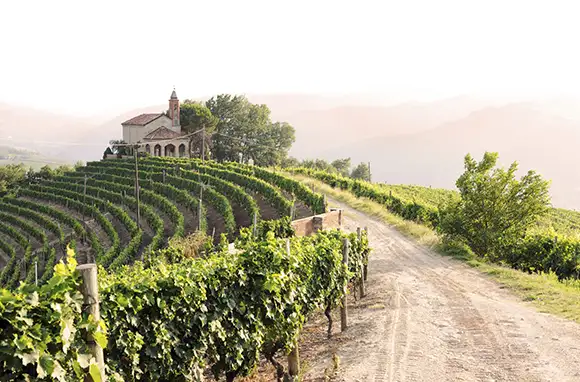
Vineyard Landscape of Piedmont: Langhe-Roero and Monferrato, Italy
The Barolo, Barbaresco, and Barbera d'Asti vines that produce the wines over which you lovingly linger are now part of Italy's 50th World Heritage site, giving it more sites than any other country. Tucked between the coastal mountains of Liguria Appenines and the Po River, the roughly 25,000-acre area covers five distinct wine-growing regions and a landscape that includes the Castle of Grinzane Cavour. Vine pollen dating back to the fifth century BCE, when Etruscans and Celts traded here, has been found in the area; the local dialect still includes Etruscan and Celtic words related to wine. More than 2,000 years ago, Pliny the Elder declared Piedmont one of the most favorable wine-growing regions in ancient Italy, and it remains so to this day.

Vineyard Landscape of Piedmont: Langhe-Roero and Monferrato, Italy
The Barolo, Barbaresco, and Barbera d'Asti vines that produce the wines over which you lovingly linger are now part of Italy's 50th World Heritage site, giving it more sites than any other country. Tucked between the coastal mountains of Liguria Appenines and the Po River, the roughly 25,000-acre area covers five distinct wine-growing regions and a landscape that includes the Castle of Grinzane Cavour. Vine pollen dating back to the fifth century BCE, when Etruscans and Celts traded here, has been found in the area; the local dialect still includes Etruscan and Celtic words related to wine. More than 2,000 years ago, Pliny the Elder declared Piedmont one of the most favorable wine-growing regions in ancient Italy, and it remains so to this day.

Pergamon and Its Multi-Layered Cultural Landscape, Turkey
The ancient Greek city of Pergamon rises from the Bakirçay Plain near the Aegean coast, where it was once one of the most important centers of culture, art, and architecture in the ancient world. The acropolis, or upper city, contains the Sanctuary of Athena, the Temple of Dionysos, and the Upper Agora, a theater for 10,000 people, as well as a 200,000-volume library that Mark Antony is believed to have given Cleopatra as a wedding gift. The site is also home to prehistoric remains, as well as those of the later Roman, Byzantine, and Ottoman civilizations. Less than two miles south of the acropolis, in the valley, was the Sanctuary of Asclepius, a healing center built in the first half of the fourth century BCE. Here, ailments were treated with hydrotherapy, physical therapy, and hypnotherapy—methods still used today.

Monumental Earthworks of Poverty Point, United States
This array of five earthen mounds and six concentric ridges overlooking the Lower Mississippi River Valley is the 22nd World Heritage site in the U.S., joining the ranks of such iconic spots as Yosemite National Park, Grand Canyon National Park, and the Statue of Liberty. Built by a society of hunter-gatherers some 5,700 years ago, the 910-acre complex gets its name from a nearby 19th-century plantation and could possibly be the largest hunter-gatherer settlement that ever existed. What's especially impressive is that it was built by people who had no access to draft animals, wheelbarrows, or any means of moving earth other than primitive "bucket brigades."
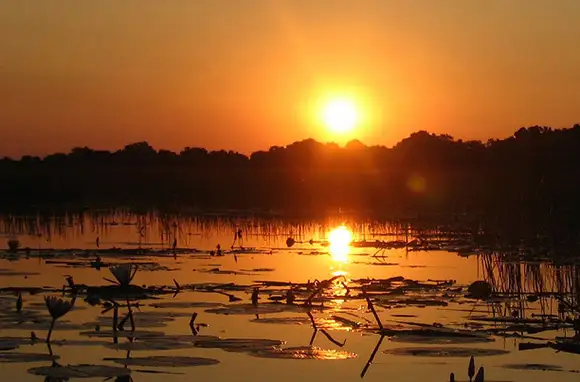
Okavango Delta, Botswana
This massive, pristine wetland—home to such endangered animals as cheetahs, lions, white and black rhinos, and African wild dogs—is considered one of the Seven Natural Wonders of Africa, along with Mt. Kilimanjaro and the Sahara Desert, and bears the honor of being named the 1,000th World Heritage site. The delta has its origins in the highlands of Angola, where the Okavango River flows before eventually spreading over the sands of the Kalahari Desert. It's one of the few deltas in the world that never reaches the sea. This immense watering hole, punctuated by emerald-green reed beds and dotted by tree "islands," provides refuge for a large concentration of wildlife, including elephants, giraffes, wildebeests, impalas, and antelopes.

Stevns Klint, Denmark
Located on the Danish island of Sjælland about 28 miles south of Copenhagen, Stevns Klint is a nine-mile-long white-chalk cliff reaching as high as 130 feet, whose fossils chart the recovery of life on Earth after an asteroid wiped out the dinosaurs and more than half of all other life-forms some 65 million years ago. The Chicxulub meteorite, whose 110-mile-wide crater is located off Mexico's Yucatan Peninsula, produced the only mass-extinction event ever recorded. This site contains an unmistakable ash layer coinciding with the cataclysmic event and successive layers of fossils that show how the planet's ecosystem changed and adapted afterward.
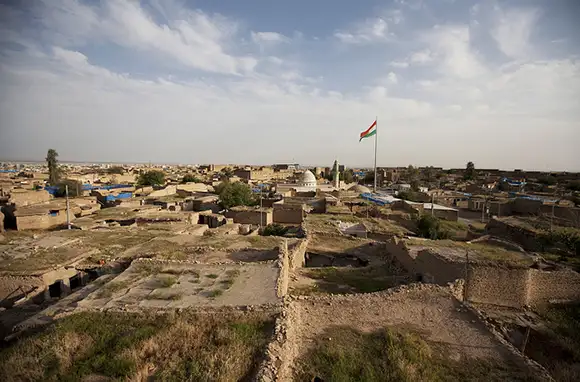
Erbil Citadel, Iraq
Thousands of years of building and rebuilding in the same spot created the hill on which Erbil sits. Some accounts call this 25-acre fortified settlement the oldest continuously inhabited town in the world, going back to the fifth millennium BCE and possibly earlier. More than 1,300 years ago, it was an important Christian site, but after the Mongols captured it in 1258, its fortunes declined. Erbil occupies what is today the Kurdistan region of Iraq and, at least for now, has been spared from the current unrest in the country. However, there is great concern that it could fall into the hands of Muslim radicals, who've been known to destroy such precious antiquities as the Buddhas of Bamiyan in Afghanistan (2001) and the Sufi shrines in Timbuktu (2012), both of which were UNESCO World Heritage sites.

Pyu Ancient Cities, Myanmar
As Myanmar emerges from decades of military dictatorship, it claims its first World Heritage site: the remains of three cities that flourished in the Irrawaddy River basin between 200 BCE and 900 CE. The Pyu cities, strongly influenced by trade with India, imported Buddhism, then flourished for a millennium until being destroyed by repeated invasions. The remains of the walled cities of Halin, Beikthano, and Sri Ksetra include palace citadels, burial grounds, monumental brick Buddhist stupas, partially standing walls, and some water-management features that are still in use.

Great Himalayan National Park, India
The habitats contained in this quarter-million-acre park range from lush oak and bamboo forests to verdant alpine meadows and high-elevation glaciers. Its snowmelt is the source of several rivers and thus the water supply for millions of people. The park is also home to several rare and threatened species, including the snow leopard, Asiatic black bear, cheer pheasant, blue sheep, and Himalayan tahr (a kind of goat), as well as the critically endangered red-headed vulture and a couple dozen endangered plant species. The park is particularly prized for its biodiversity: There are more than 209 species of birds and 31 species of mammals.

Bolgar Historical and Archaeological Complex, Russia
Along the banks of the Volga River, in the Russian Republic of Tatarstan, this archaeological site contains the remnants of the medieval city of Bolgar, capital of the Golden Horde region of the Mongol Empire. Because of its strategic location at the confluence of the Volga and Kama rivers, Bolgar was an immensely important trade center from the seventh through 15th centuries. Traders converged here, bringing carpets from Byzantine, swords from France and Iran, gold, silver, and silk from China, and perfumes and spices from India. By 922, Bolgar—considered by some the third-most-advanced city at the time, after Rome and Constantinople—had embraced Islam, and to this day, the site remains a sacred pilgrimage destination for Tatar Muslims.

Grand Canal, China
China's Grand Canal is the longest man-made waterway in the world, running from Beijing in the north to Zhejiang province in the south, with a history that began more than 2,400 years ago. Construction started in the fifth century BCE, and by the 13th century, it consisted of more than 1,200 miles of waterways for shipping grain, rice, and raw materials. The portion of the canal inscribed by UNESCO stretches nearly 630 miles, through 25 cities and six provinces, and is still used to transport huge quantities of gravel, diesel, coal, and bricks.

Decorated Cave of Pont d'Arc, France
Deep in a limestone plateau along the Ardeche River in south-central France, the Grotte Chauvet-Pont d'Arc contains the oldest known and best-preserved cave paintings in the world. These drawings date back as far as 32,000 years ago and are considered some of the most important works of prehistoric art. They employ a range of techniques, including combining painting and engraving, anatomical precision, and three-dimensionality to depict rhinos, bears, mammoths, snow leopards, aurochs, and other animal species. It's believed that the cave—discovered only 20 years ago—is in such pristine condition because a rock slide sealed it off some 20,000 years ago. But unlike most World Heritage sites, the public will never see it. In an effort to avoid the kind of human-borne mold and mildew that damaged the paintings at the famous Lascaux cave (now closed), the actual site will be closed to the public. Instead, a replica site will reportedly open at the end of this year in France.
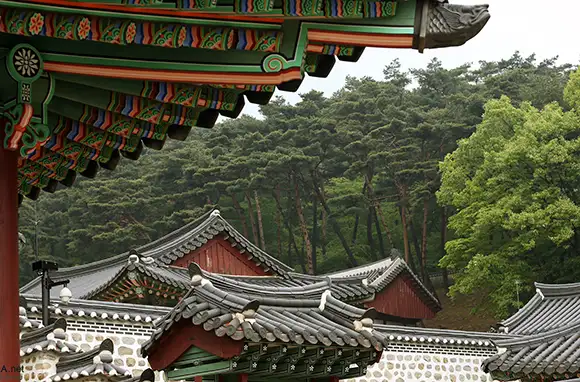
Namhansanseong, Republic of Korea
The earliest remains of this fortress date back to the seventh century, but most of what is left today was built in the 17th century by Buddhist-monk soldiers defending their king from invading Manchus. Today, the site, located just south of Seoul, is a popular national park where city dwellers come to hike, picnic, and look back toward the city from walls more than a thousand years old. The compound contains about 200 historic sites and buildings, including an "emergency palace" where kings could work and live during wartime.

Carolingian Westwork and Civitas Corvey, Germany
In the 12th century, the city-state of Corvey Civitas was destroyed, but today, this site is considered one of the few almost-intact archaeological remains of an entire medieval city. Its westwork—the west-facing entrance of a church that consists of several stories between two towers—was built by French Benedictine monks in 822 and is the oldest example of this kind of architecture in existence. It's also all that remains of the abbey, one of the most important monasteries and pilgrimage sites of the Middle Ages, after most of it was destroyed in the Thirty Years' War of the 1600s.

Mt. Hamiguitan Range Wildlife Sanctuary, Philippines
This 16,900-acre wildlife refuge provides a critical habitat for a wide variety of plant and animal species, including the Philippine Monkey-Eating Eagle (the national bird) and the Philippine Cockatoo. Eight of these species are only found on the park's namesake, 5,315-foot Mt. Hamiguitan. It's also home to golden-crowned flying foxes, Philippine warty pigs, tarsiers, brown deer, and Philippine mossy-pygmy fruit bats. The area is also famous for its 555-acre bonsai forest, whose trees are more than a century old.
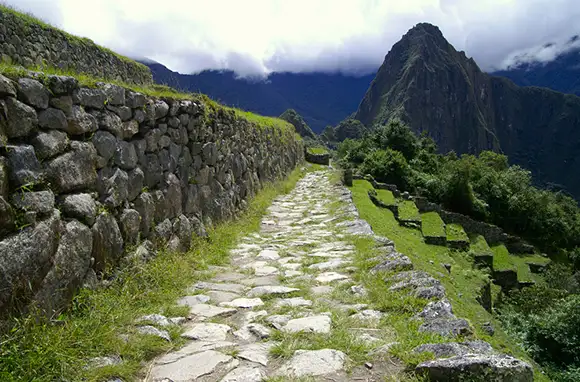
Qhapaq Ãan, Andean Road System, Argentina, Bolivia, Chile, Colombia, Ecuador, and Peru
Probably the best-known section of the Andean Road System is the Inca Trail to Machu Picchu, but some parts of the Qhapaq Ñan were built centuries earlier by the Wari culture. It was the Incas in the 1400s, though, who conquered the steep terrain of the Andes by building enormous stone steps. In the low-lying coastal deserts, they built walls to prevent sand from drifting over the road. Some stretches traversed heights of more than 16,000 feet above sea level as they connected regions from Quito, Ecuador, in the north, through Cusco, Peru, and south to what is now Tucumán, Argentina. Jungle has overrun large portions of the roads, but the quality of the construction is apparent in the parts still in use today.
You Might Also Like:
We hand-pick everything we recommend and select items through testing and reviews. Some products are sent to us free of charge with no incentive to offer a favorable review. We offer our unbiased opinions and do not accept compensation to review products. All items are in stock and prices are accurate at the time of publication. If you buy something through our links, we may earn a commission.
Related
Top Fares From
Today's Top Travel Deals
Brought to you by ShermansTravel
Porto to Lisbon: 7-Nt, Small-Group Portugal...
Indus Travels
 vacation
$1899+
vacation
$1899+
Greenland: Luxe, All-Incl. 11-Nt Exploration Small-Ship...
Swan Hellenic



Ohio: Daily Car Rentals from Cincinnati
85OFF.com





